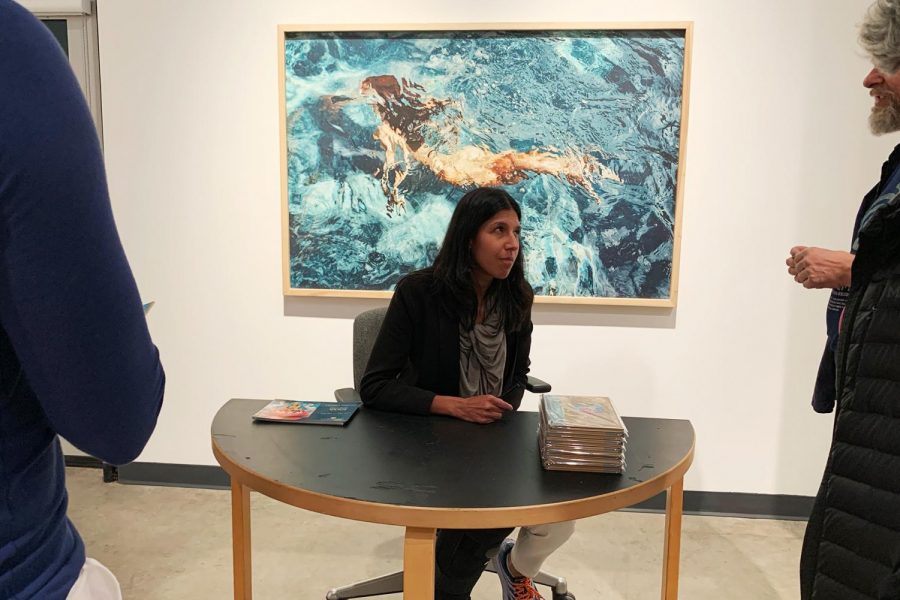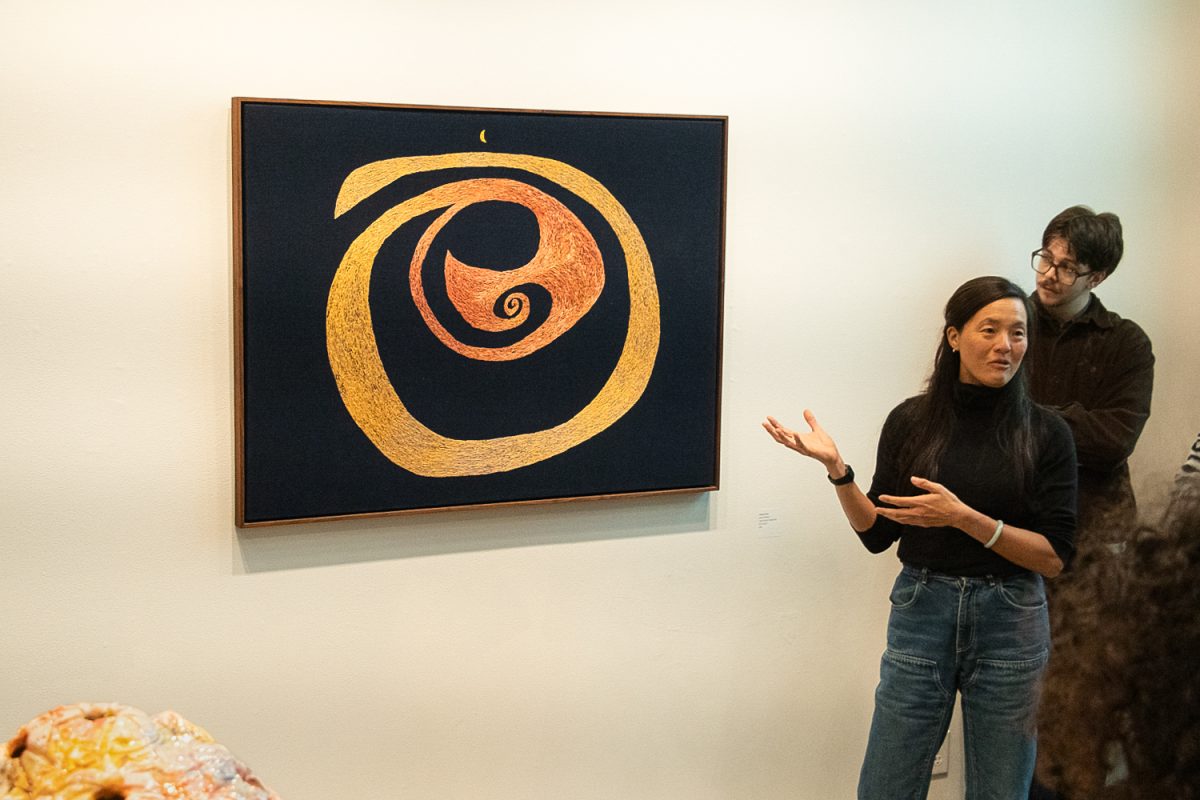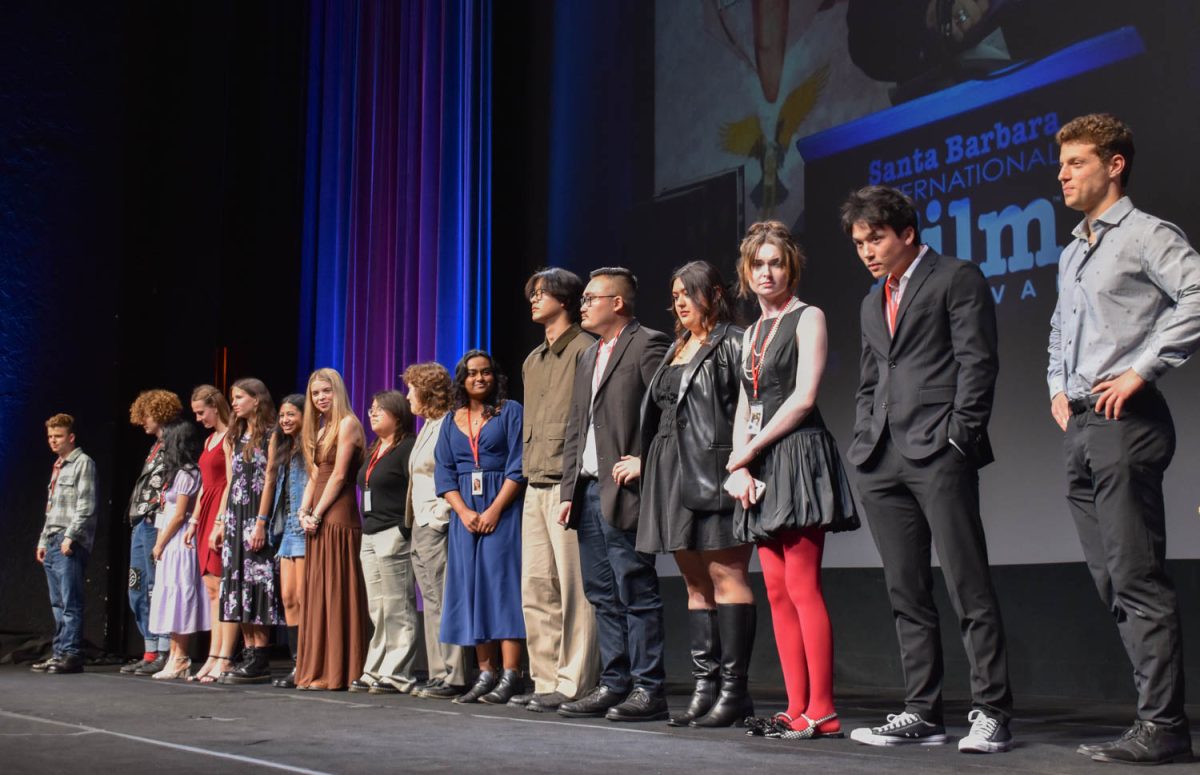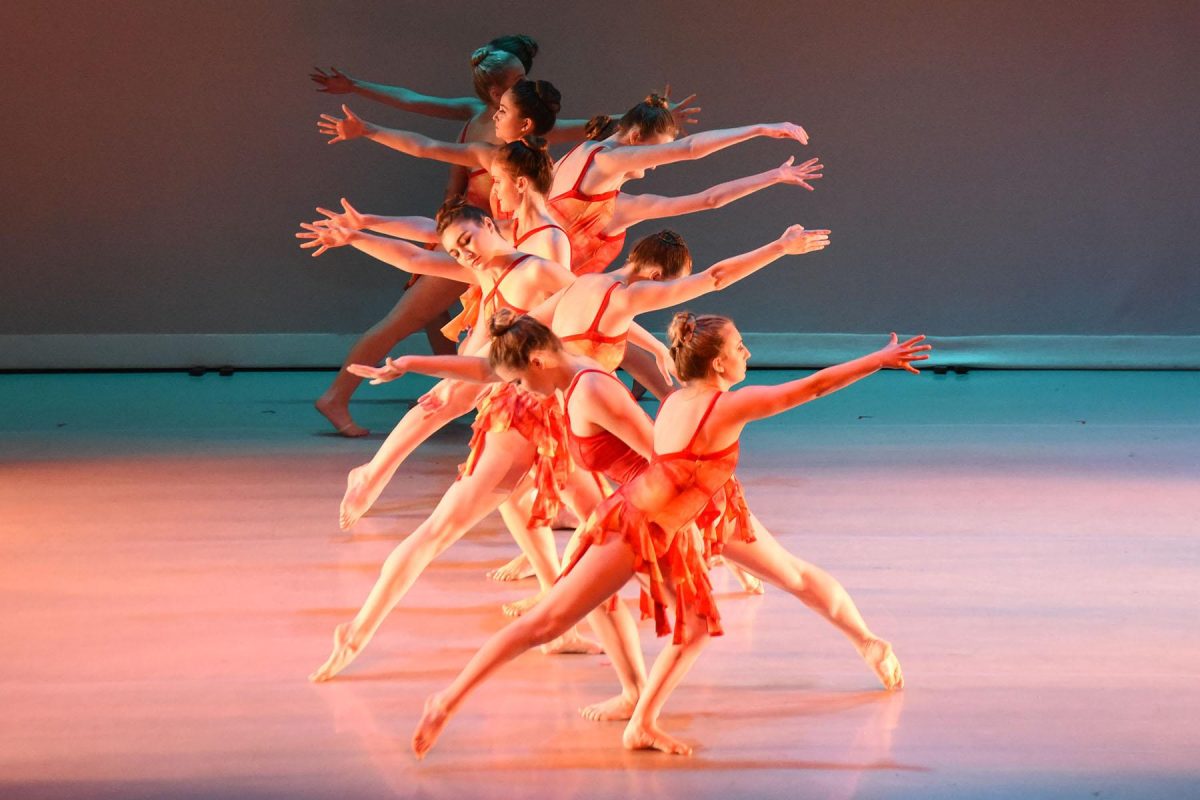In the packed lecture hall of the Humanities building, photographer and artist Manjari Sharma went back in time.
She spoke about her experiences in traveling from India to New York to California, and how the variety of cultures inspired her to create.
“I was extremely culture-shocked,” Sharma said.
At 21 years old, Sharma moved from India to Ohio to attend the Columbus College of Art and Design.
Now, her work can be found in museums such as the Metropolitan Museum of Art in New York and the Kunst Museum De Moritzburg in Germany.
Sharma has done several different photo series in her time as a photographer. The themes of each collection seem to be inspired by where Sharma lived at the time, and who she surrounded herself with.
While living in New York, she was inspired by the particular way light would stream into her small bathroom.
This led to the creation of “The Shower Series,” wherein Sharma would invite strangers to take a shower in her bathroom while she photographed them.
“You get to know that person really quickly,” Sharma said.
Sharma would try to converse with the subjects to make them more comfortable.
“They walk in as a stranger, and walk out as a friend,” she said.
Growing up in a “tame domestic household,” the idea of photographing naked strangers was unheard of in her hometown.
“My parents would never understand,” she said.
After 10 years in America, Sharma moved back to India. Being surrounded by her culture again, Sharma noticed how prominent the Hindu gods were displayed around the cities.
This inspired her to create her next project, entitled “Darshan.”
Sharma spent months on the project, building limbs, headdresses and plaster molds. She shot the photos on the roof of her parents’ home.
“She is a very sensitive artist,” said Frederick Janka, a friend of Sharma’s. “She thinks about the process very thoughtfully.”
In the middle of her lecture, Sharma fought back tears when recalling her mother’s seven-year battle with dementia.
Her series “Loss and Resurrection” captures her mom’s state during this time.
“She leads into the same story over and over,” Sharma said. “I watch this complete tragedy, and my [six-month-old] daughter loves it, she loves repetition.”
Her camera is something that protects her, Sharma said. She takes the pictures, puts it on a hard drive and looks at it weeks later.
Sharma now lives in Santa Barbara, and her small New York bathroom window has been upgraded to a full-body window.
With that upgrade, she took the opportunity to do her shower series again.
She immediately noticed how the people of Santa Barbara were more comfortable with the idea of being naked in front of a camera.
Sharma was interested in capturing people of color, especially since Santa Barbara seemed to be divided, something she did not see in New York.
“Santa Barbara has zones in town,” she said. “I couldn’t wait to break down those walls.”
She quickly moved to swimming pools, trying to capture naturalistic forms.
Atkinson Gallery Director John Connelly said this was a perfect fit for City College’s new show that focuses on human figures, “Eleven Figures in Two Parts.”
“I wasn’t familiar with her work until I saw it in Lotusland,” Connelly said. “After I saw the ‘Darshan’ series, I’ve been following her ever since.”
She ended the lecture with a phrase that she lives by.
“You may be transmitting, but people may not be on your frequency,” Sharma said.















